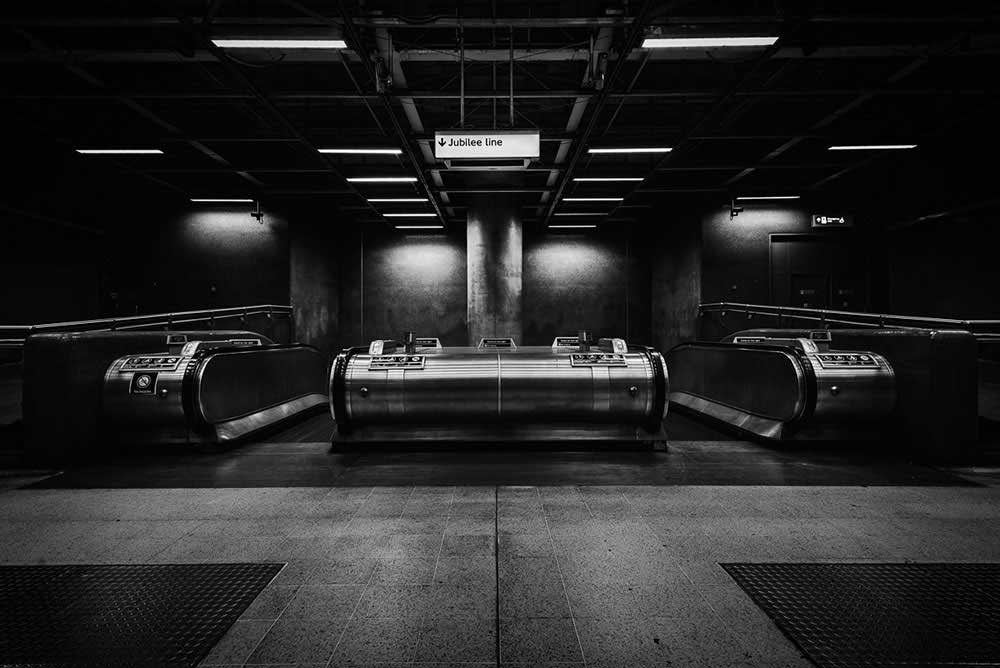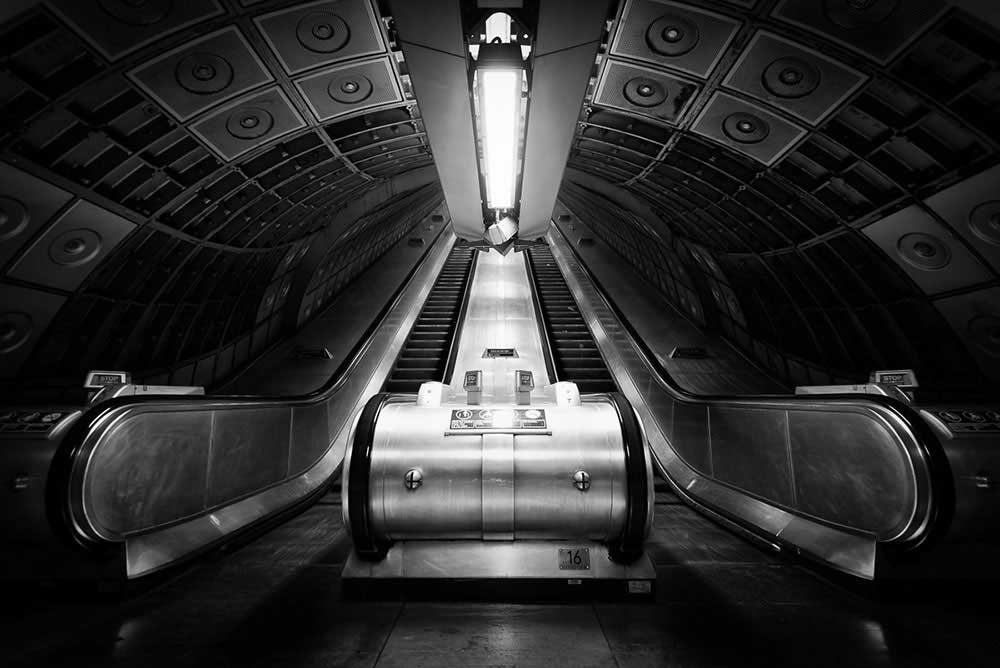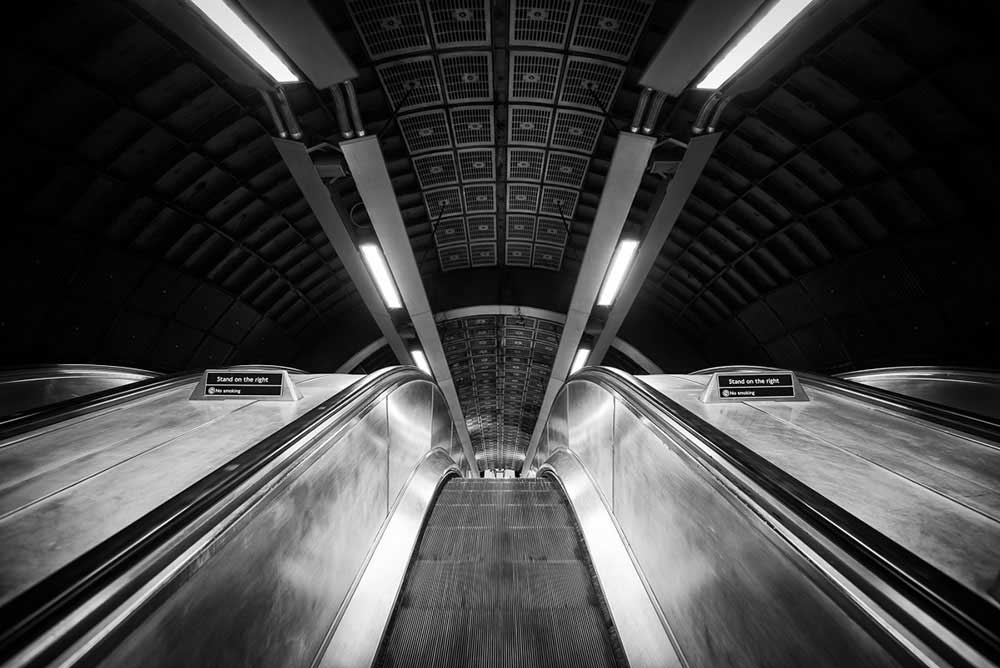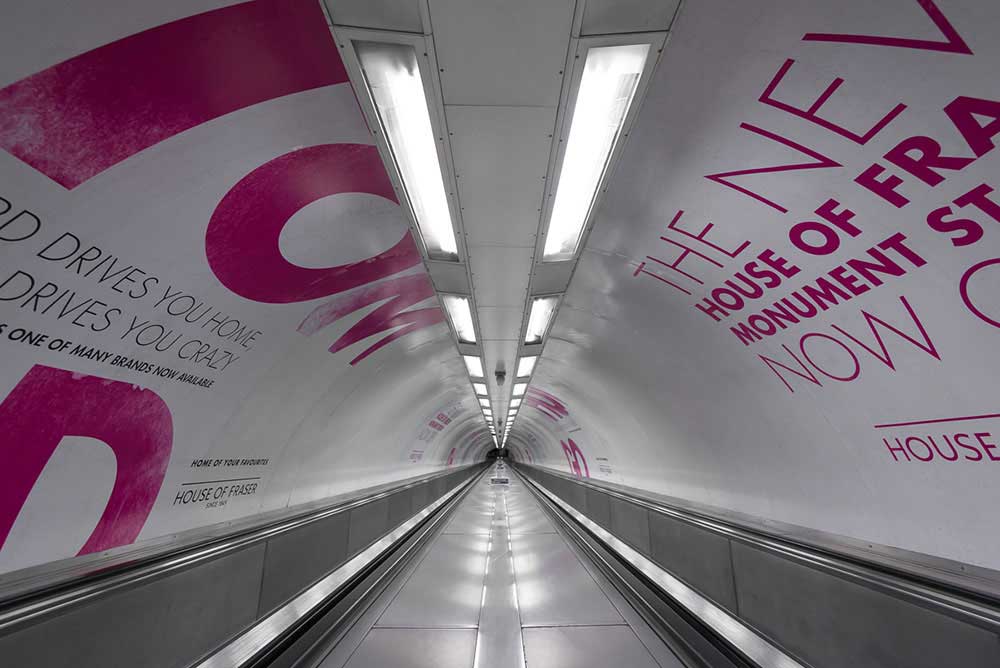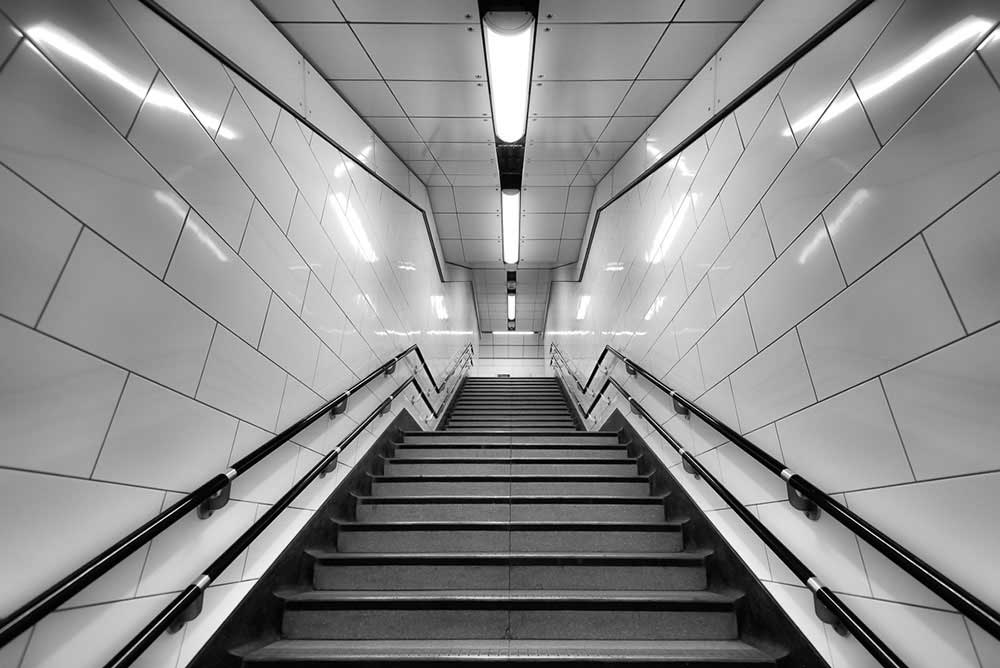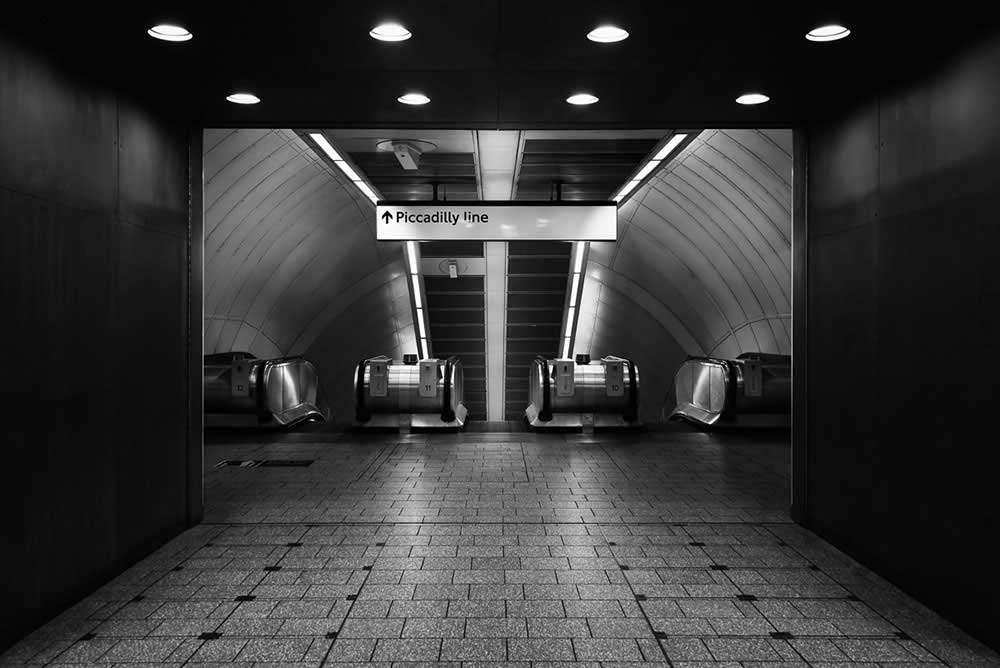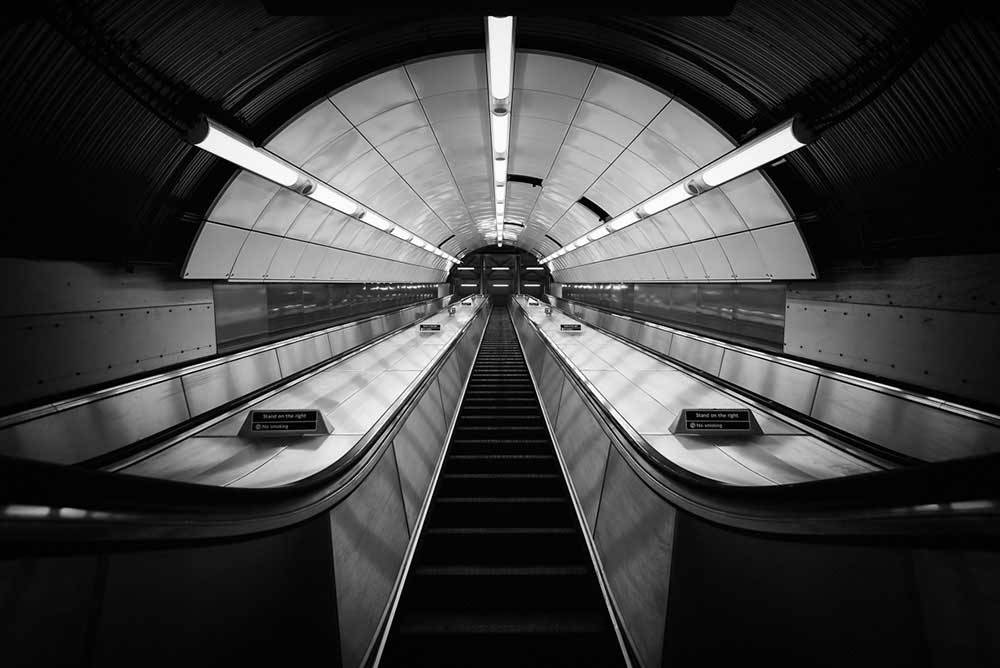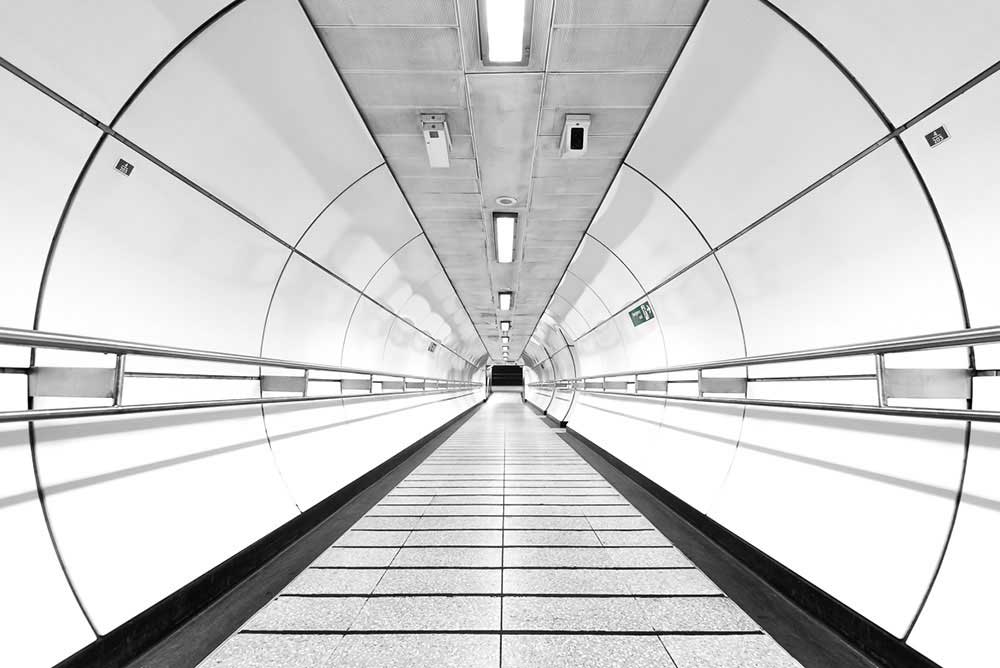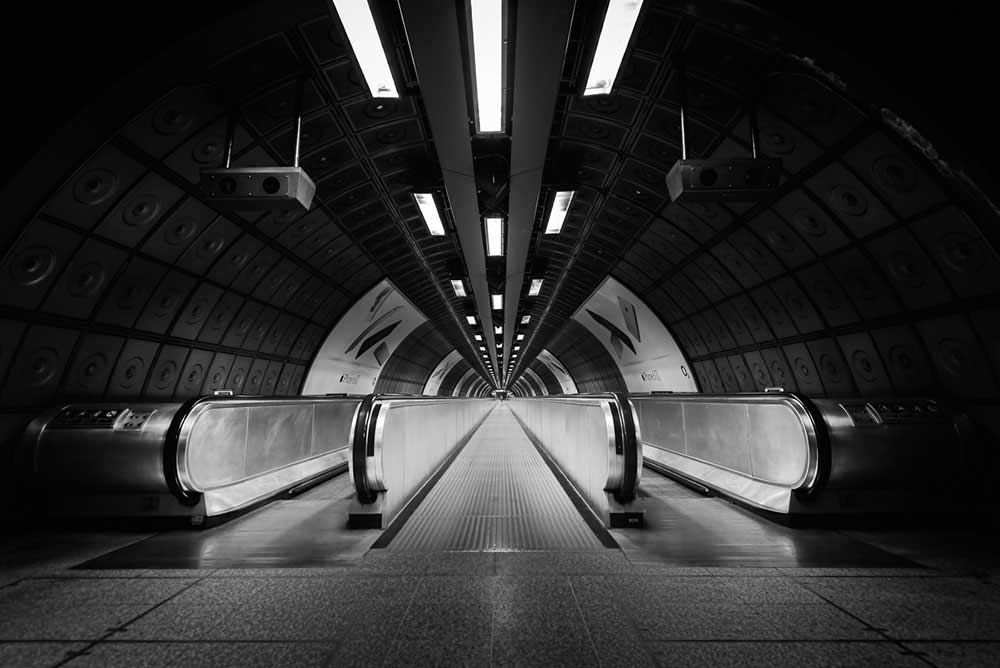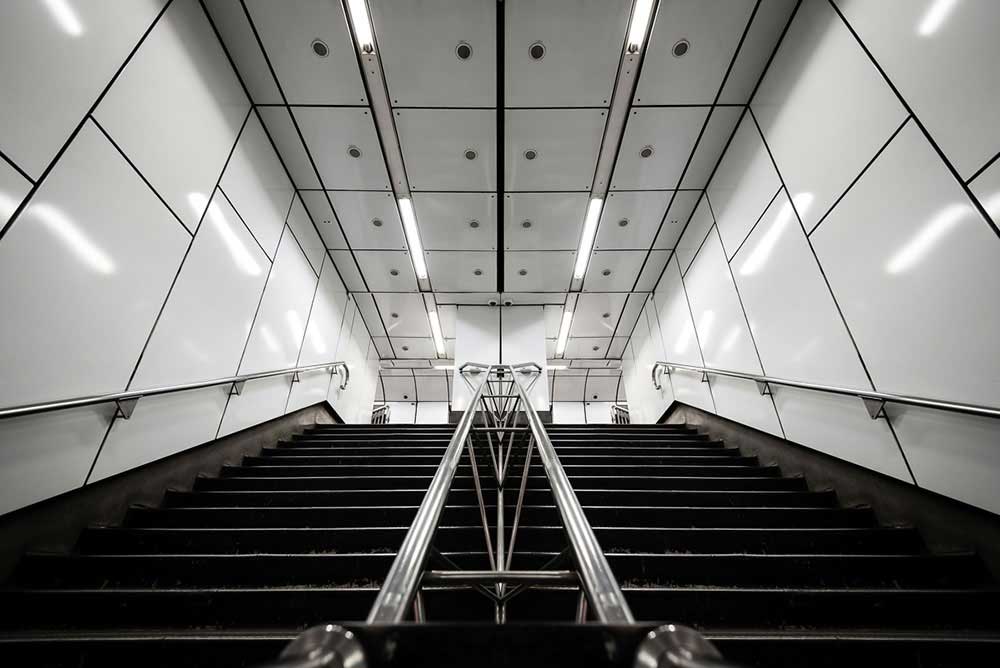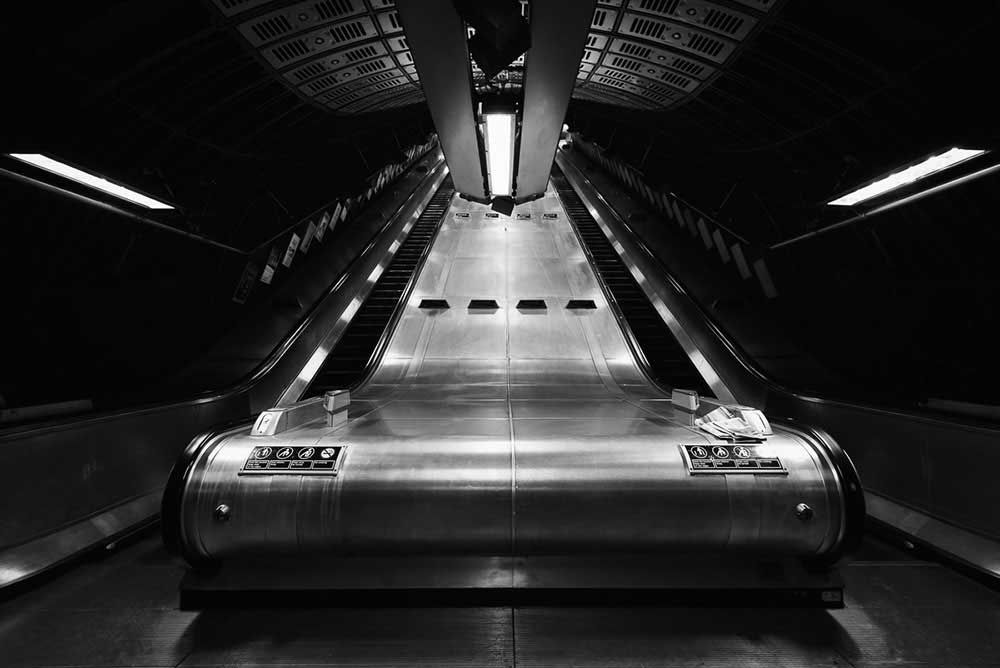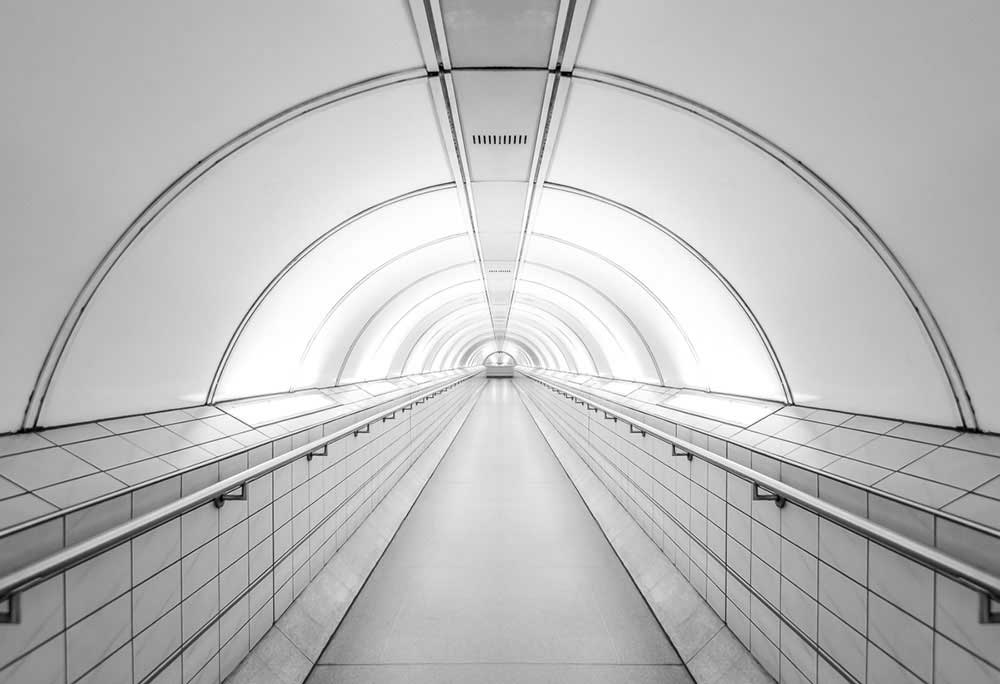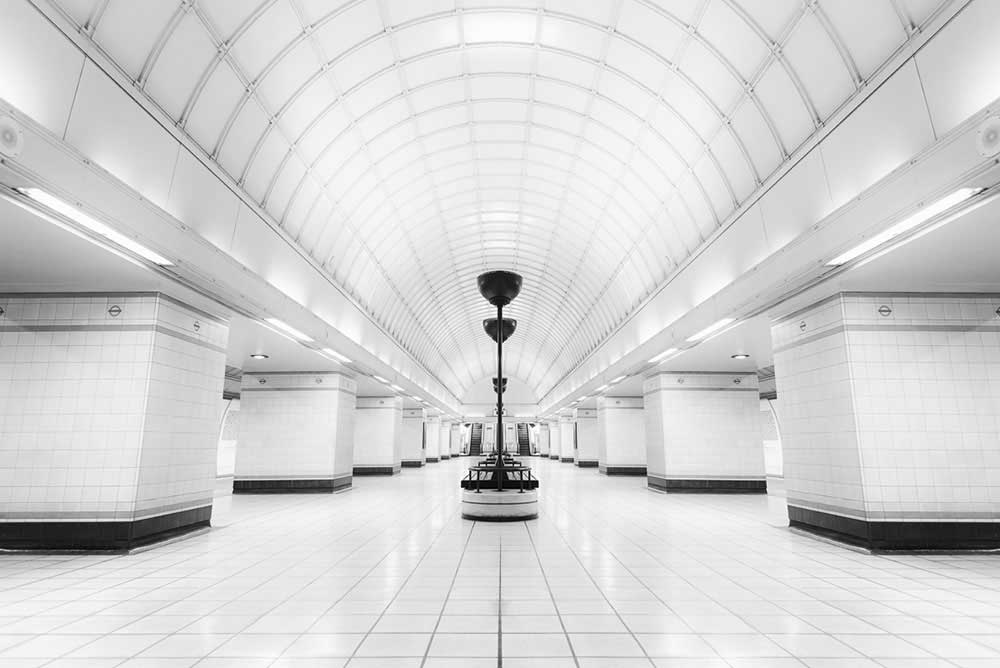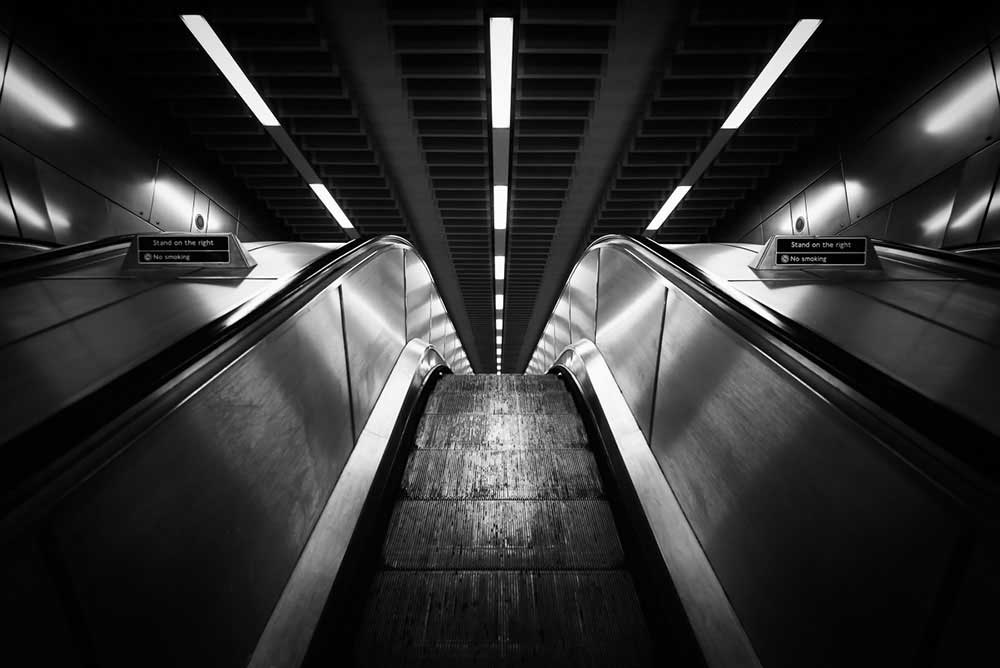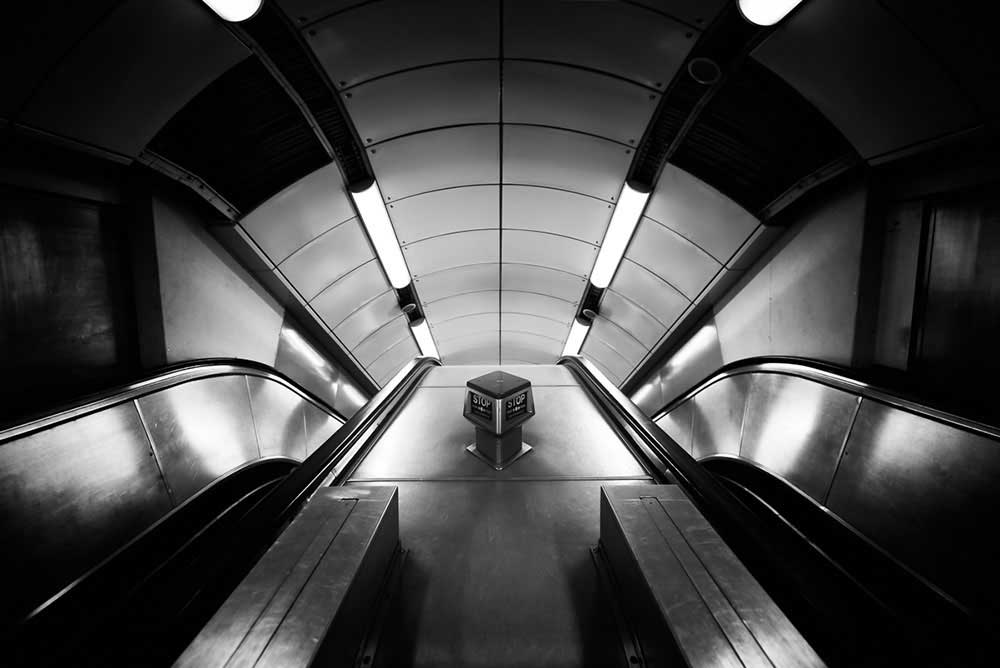London Underground, colloquially known as the Tube, it is the oldest underground railway in the world. The Metropolitan Line was the first to be opened in 1863 and ran between Paddington and Farringdon. The endless tunnels are normally overrun with human activity at all hours of the day.
The architecture of each station is unique, although a number of stations share similar characteristics and styles. I personally favour the ones with smooth, stainless steel escalators and contrasting concrete walls. The simplicity of the materials emphasises texture and form of each structure and determines the way it renders light and shadow. My fascination with the architecture of the underground eventually translated into four separate series of images capturing my impressions of it.
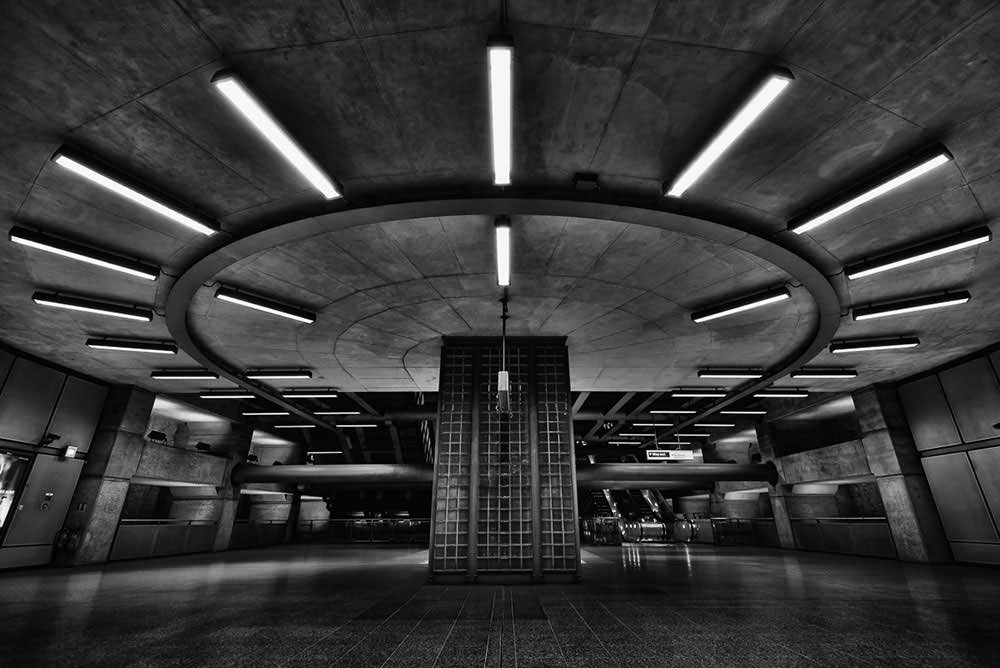
The first of the four is a six-part series called ‘Heart of Darkness’. Its title was inspired by Joseph Conrad’s novella ‘Heart of Darkness’ and I used its double meaning to describe the darkness that exists deep within the underground tunnels as well as that existing in every person’s heart. Soon after came another six-part series ‘The Abyss’, the menacing alien insect series, closely followed by ‘The Void’ and ‘Oblivion’ each consisting of three images. ‘Heart of Darkness’ and ‘The Abyss’ are both very atmospheric, ominous and dark. In each instance, I chose low key processing to draw attention to certain parts of the image while de-emphasising others. ‘The Void’ and ‘Oblivion’ on the other hand, have a very different feel to them. Bright, high-key processing makes the empty interiors look clinical, resembling an empty hospital or an interior of a spaceship.
Despite their obvious differences, the common theme in all my series is their haunting and eerie mood – futuristic spaces devoid of any signs of life create an air of mystery and apprehension. I used symmetrical composition with special attention to the available light sources to strengthen the visual effect and to pull the viewer towards the centre of the photograph. My intention was to create a ‘post-apocalyptic’ ambiance, removing all unnecessary elements from the frame, focusing purely on the raw architecture of each station.
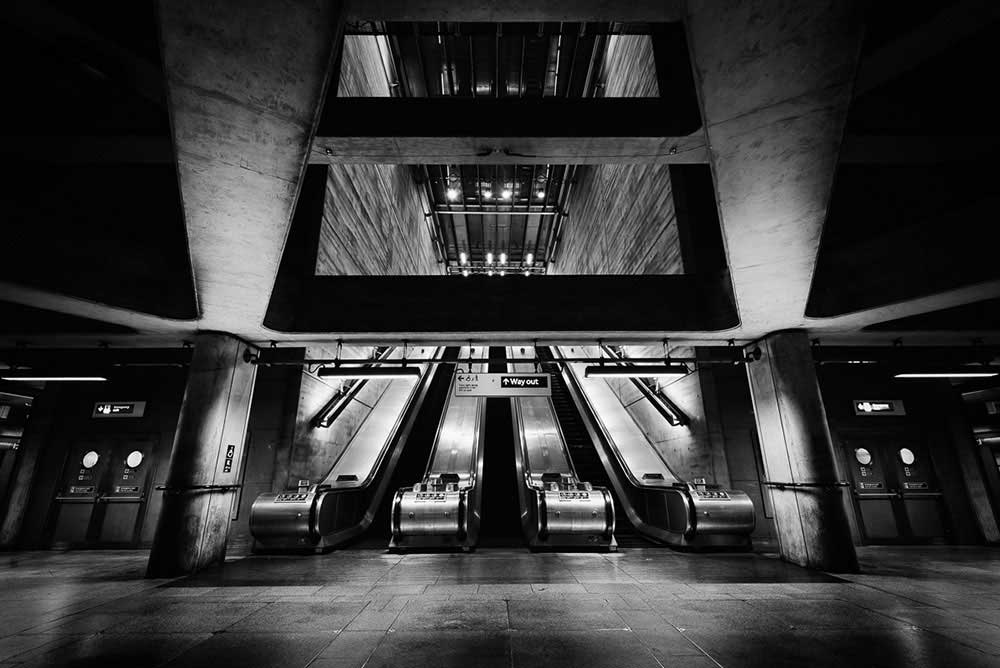
About Katherine Young

Katherine’s portfolio is diverse however, she is particularly drawn to curves, lines, shapes, reflections and fascinated by the way various surfaces render light and shadow, bringing them to ‘life’. Katherine describes her style as fine art because her photographs are created in accordance with her artistic vision rather than being a true representation of reality. This allows her to produce more personal and evocative images, providing her with unlimited freedom of expression.
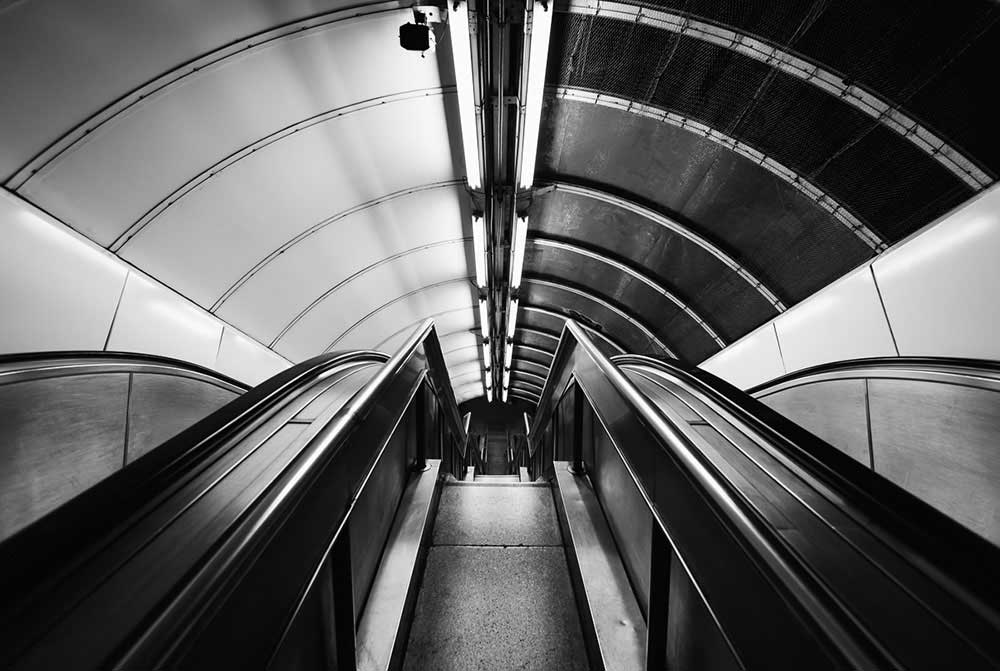
Katherine’s real passion is black-and-white photography as she feels that monochromatic images have a surreal and timeless quality, which leaves a striking impact on the viewer. Without the distraction of colour, the photograph looks cleaner and reveals the very soul of the subject. Katherine uses black and white photography often paired up with long exposure technique to control the mood and highlight details not normally seen in colour. Equally, Katherine uses colour in instances when colour itself becomes the main subject in her photographs.
Katherine’s work has been published in various magazines and included in two Nikon films. Her most notable awards to date include Architecture Photographer of the Year and Gold Award winner at the 2019 International Photography Awards (ipa), Bronze Award at the 2019 Moscow International Foto Awards (mifa), Silver Award at the 2019 Prix de la Photographie, Paris, Shortlist at the 2019 Sony World Photography Awards, Silver Award at the 2018 Prix de la Photographie, Paris, Silver and Bronze Awards at the 2018 Moscow International Foto Awards (mifa), Bronze Award at the 2018 Fine Art Photography Awards and Commendation at the 2017 Sony World Photography Awards. [Official Website]



